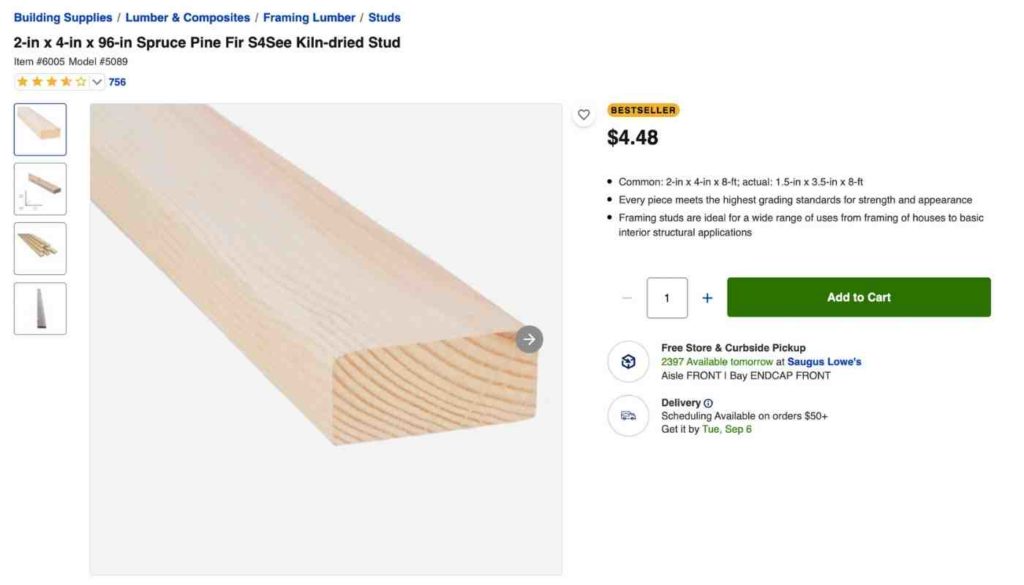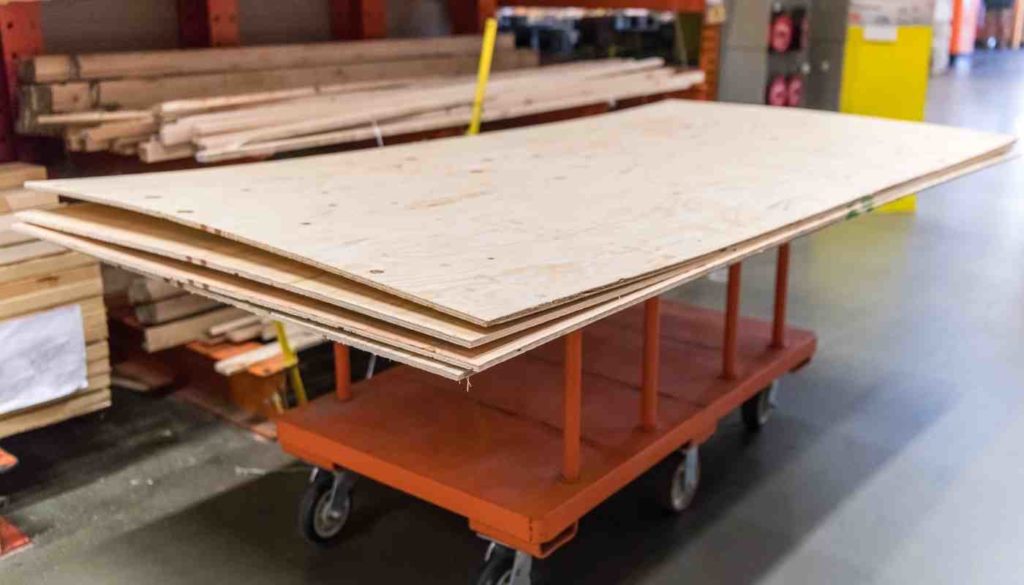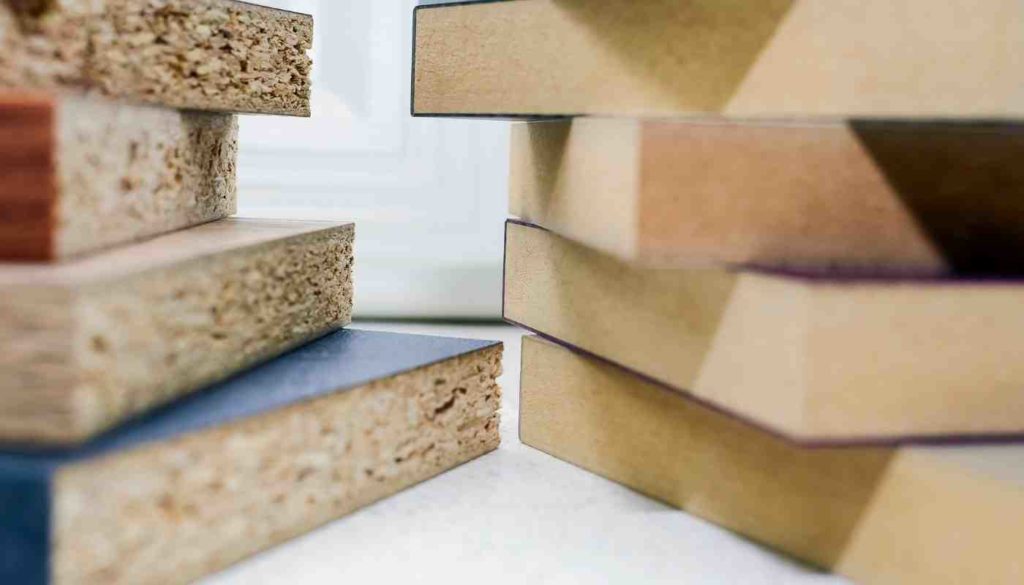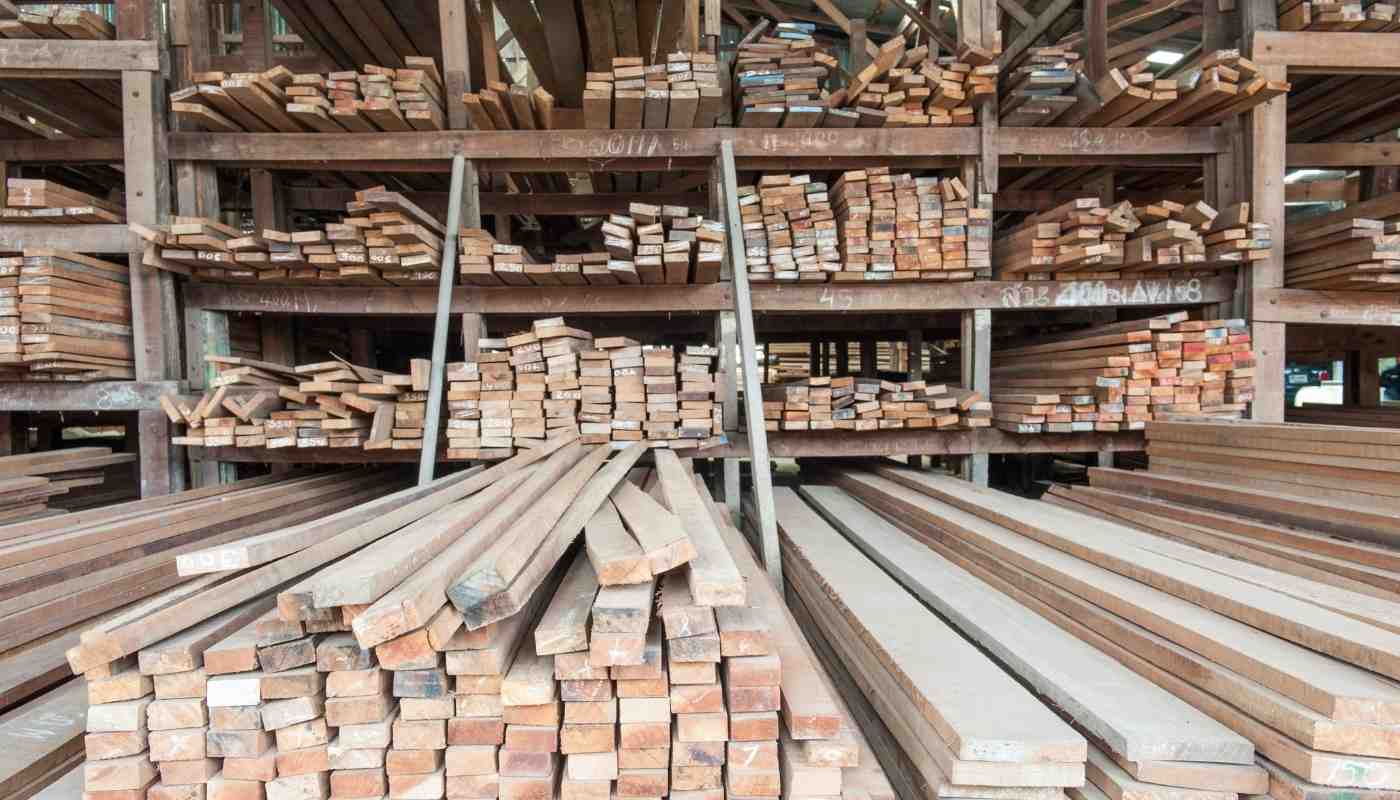Cheapest Woods for Any Project (2024 Guide)
Woodworking and home projects can be a fun and rewarding hobby, but the cost of materials, specifically wood, can be expensive.
But by using some of the cheaper wood options, you can save money and continue enjoying your hobbies.
In this post, I’ll explore the cheapest woods you can buy, the differences in types of woods, and much more. Let’s get started!
Common Types Of Cheap Wood
When it comes to the cheapest woods, you have several options you can use depending on your project.
In general, softwoods will almost always be cheaper than hardwoods.

Pine
Pine wood is probably the cheapest wood that you can get on a consumer level, but it is also one of the best wood options when high strength and low cost are needed.
Pine wood is sourced from the dozens of different pine species that grow natively around the world. It is notably resistant to stiffness and change, which makes it an ideal option for wood furniture construction.
Pine wood creates wood products that are known to have a more rustic appearance and are highly rot-resistant.
Whether you’re looking to build furniture or create an outdoor project, pine wood is a cost-effective option that will last for years.
Maple
Maple wood is one of the cheap woods that is often overlooked for a few reasons.
There are many types of maple wood, but soft maple will generally be cheaper than hard maple. In either case, they are harder woods that will last a long time and can be used for a variety of projects.
While maple wood is more expensive than pine, it is still a cheaper wood option when compared to other hardwoods.
Maple wood furniture is incredibly popular due to the patterning and vibrant coloring that maple can hold. From tables to bookshelves, maple is one of the most popular types of wood from deciduous trees.
One thing to remember when working with maple is that some forms are toxic when inhaled or ingested. When you’re tackling your next project, be sure that any maple work includes a dust mask or respirator, and that you wear gloves to remain safe.
If you need wood that’s more water resistant, check out these weather resistant woods!
Poplar
Poplar is a cheap wood that can be used in place of expensive hardwood when appearance and workability are most important.
While it’s not nearly as strong as maple or oak, poplar is still a decent option for light construction and furniture making.
Poplar is a great option for many projects that will create smaller scraps of wood. The ability to make very small planks with a distinct natural color for custom wooden products is a huge benefit.
Poplar wood has a unique greenish-white color that also features streaks of purple. One downside to poplar wood, however, is that it can dent easily, making it less than ideal for building furniture.
Alder
Alder is another type of wood that is cheap and simple to work with.
It is a softer wood, like poplar, but its ability to take stain and coloring means you can create the perfect uniform texture and give it a rustic appearance.
When staining alder wood, you can give it a tone similar to that of walnut or cherry that is perfect for entry doors, kitchen cabinets, and even some furniture-making applications.
Looking for something higher quality? Check out these most expensive woods in the world!
White Oak
In the world of hardwoods, white oak has been one of the most popular choices for woodworkers because of its budget-friendly price point, overall strength, appearance, and robust durability.
It is used in countless applications, including making furniture and producing various outdoor projects. Like many hardwoods that come from deciduous trees, white oak is incredibly strong and budget-friendly.
White oak is one of the most durable woods, and it is one of the few types of wood that are used for boatbuilding. It is strong, long-lasting, and has a high resistance to rot.
Ash
Ash wood is a hardwood that has a very uniform texture and extremely straight grain. The natural color of ash can range from a light cream or yellow color to a warm tan color, or even a light brown.
Ash is a great idea for custom projects that need to look like they were made from very expensive wood since it has a distinct cathedral pattern in the wood grain. It can often be found for a good price or even completely free.
Ash wood is often used in just about everything including kitchen cabinets, baseball bats, and other hardwood furniture DIY projects.
What Is The Difference Between Hardwoods & Softwoods?
The primary difference between hardwoods and softwoods will be the workability of the wood itself.
The hardness of the wood will impact how it must be crafted and relates to the limitations of the wood with aspects like crack resistance, strength, and more.
Hardness also comes down to simple durability.
Hardwoods like ebony, mahogany, hard maple, will be able to stand up to more use and abuse than their softwood counterparts like pine, cedar, and fir.
For some furniture-making applications, using hardwoods is essential because the furniture will have the potential to last for generations.
Using a softer type of wood like those from coniferous trees can lead to more obvious wear & tear on the furniture.
What Is The Best Wood For Furniture Making?
There is no one perfect piece of wood to use to make furniture. All of the woods we’ve listed here will be great woods to use in furniture making.
The most significant factor that you will need to consider is the final look that you want on the project because some types of wood will give you a unique finish.
For example, picking poplar is a poor choice if you want to imitate dark cherrywood. Even though it can be used for making furniture, the grain and patterning of the wood give it a distinct look. In this case, using alder would be a better choice because while both are good for creating custom furniture, alder can more easily resemble more exotic wood.
If you want to make high quality furniture, using a hardwood like white oak or ash will give you the result you’re looking for.
What is Engineered Wood?
Engineered woods are manufactured wood products that are made from wood, but contain other substances or materials in addition.
It is important to remember that while some engineered wood can be used in making furniture, it will almost always be a lower quality solution than using solid wood.
Solid wood can create furniture like dressers, bookshelves, and memoirs that can be passed down from one generation to another.
Engineered woods are used to cut costs in typical home furniture DIY projects, such as entertainment centers or furniture for children’s rooms.
The primary advantage that manufactured woods have is that they are far less costly than solid wood materials for woodworking projects.
Getting Wood From A Home Improvement Supplier
One of the most popular ways to find the cheapest wood for your projects is to go to the home improvement store and compare the options.
Furring Strips
For super-cheap wood that comes in standard 8′ lengths, furring strips are great.
Not only do they come in a range of regular sizes, such as 1″x2″ and 1″x4″, but they have an unfinished rustic look that you can’t get with finished lumber.
One of the big downsides to furring strips, however, is finding one that has the least amount of warping.
Most furring strips will be curved, or have a big knot in an inconvenient place, but if you can find a piece that will work – this is some of the cheapest wood available.

Plywood
While it generally isn’t thought of much for the DIY woodworking community, plywood can be a cheap way to complete your project.
Large sheets of plywood are cheap and simple to cut into smaller pieces, which can make creating projects easy and affordable.
Depending on the plywood thickness you get, you can use it for many different projects. It can be used to create textured wall accents, like herringbone patterns, or it can be used to fabricate beautiful, rustic doors.
Structural Lumber
Structural lumber, also known as framing lumber, is a type of wood that is usually quite affordable.
It is typically used for framing walls, which means it isn’t crafted for its look or texture, but it can be purchased in quantity for relatively cheap.
Framing lumber is just what you’d expect from the name, it is lumber that is usually found in dimensional sizes, like 2″x4″x8′. In most cases, these will be the cheapest option next to furring strips. While framing lumber isn’t as rough as furring strips, you will need to do a little digging around to find a few that are perfectly straight.
One downside to structural or framing material is that they will have rounded edges. Depending on your project, this might not be an issue, but if your project requires tight joints, this may not be the best option for you.
Common Board
Common board is the next step up from structural wood in terms of straightness and finish. They are generally 1″ thick, and vary by width and length.
Common board will be a more expensive wood option, as they are usually priced by the foot, but it is also a significant improvement in smoothness and quality over other options.
You will commonly see this type of board used in headboards, fireplace mantels, shutters, and some DIY projects.

MDF
MDF, or medium density fiberboard, is one of the cheapest wood options for those that need a wood panel.
It isn’t a solid wood option, it’s a manufactured product like plywood or engineered woods.
Medium density fiberboard is a blend of sawdust, wax, and a binder like glue or resin. The mixture is formed into large panels like plywood and is cut into commonly-used sizes.
MDF is a great option when solid wood isn’t needed. It’s always straight, and there are no knots or grain to worry about if you need to cut it. It’s also available in standard project sizes, like 24″x24″, and 24″x48″. In some situations, you can also buy medium-density fiberboard in longer planks to use in other projects.
MDF is often used for closet shelving, bookshelves, and project benches. One of the benefits of MDF is the slightly higher fire resistance it has over solid wood options.
Reclaimed Wood
The benefits of using reclaimed wood include the price and the sustainability factor.
Reclaimed wood is frequently pressure-treated wood that has been in use for many years already and is being repurposed.
One classic example is the scrap wood created from taking down an old barn. While sometimes this is given away as free wood, in some situations, reclaimed or up-cycled materials can fetch a premium in the resale or social media market.
If you can find some being given away, it’s always wise to grab some. If nothing else, you will have more scrap wood that you can use for other projects.
Tips to Save Money When Buying Wood
Below are a few tips you can use to help you save money woodworking!
- Browse lumberyards. Lumberyards will often have better prices than traditional hardware stores like Lowe’s or HomeDepot.
- Take advantage of credit card rewards. Even if it’s just 2% – this can add up!
- Buy in bulk. Many stores will offer discounts for buying larger quantities of lumber.
- Check for damaged boards. If you don’t need a perfect finish for your project, these can be discounted over 50% off.
Final Thoughts on the Cheapest Wood
Being able to find the cheapest wood for your woodworking project means you’ll be able to spend less on your materials and more on the tools you need to complete your project.
The cheapest woods are usually the lower-quality woods, but that doesn’t mean you can’t find some good deals on more durable types of woods.
Pine, maple, poplar, and alter are usually the cheapest hardwoods at most lumberyards, but don’t forget to check for specials on other types of wood that may be available.
If you’re not concerned about the quality and durability of the wood you’re working with, plywood, furring strips, and MDF are always going to be the cheapest options.
Just remember that the cheapest wood may not always be the best option for your project, so be sure to consider all of your options before making your decision.

